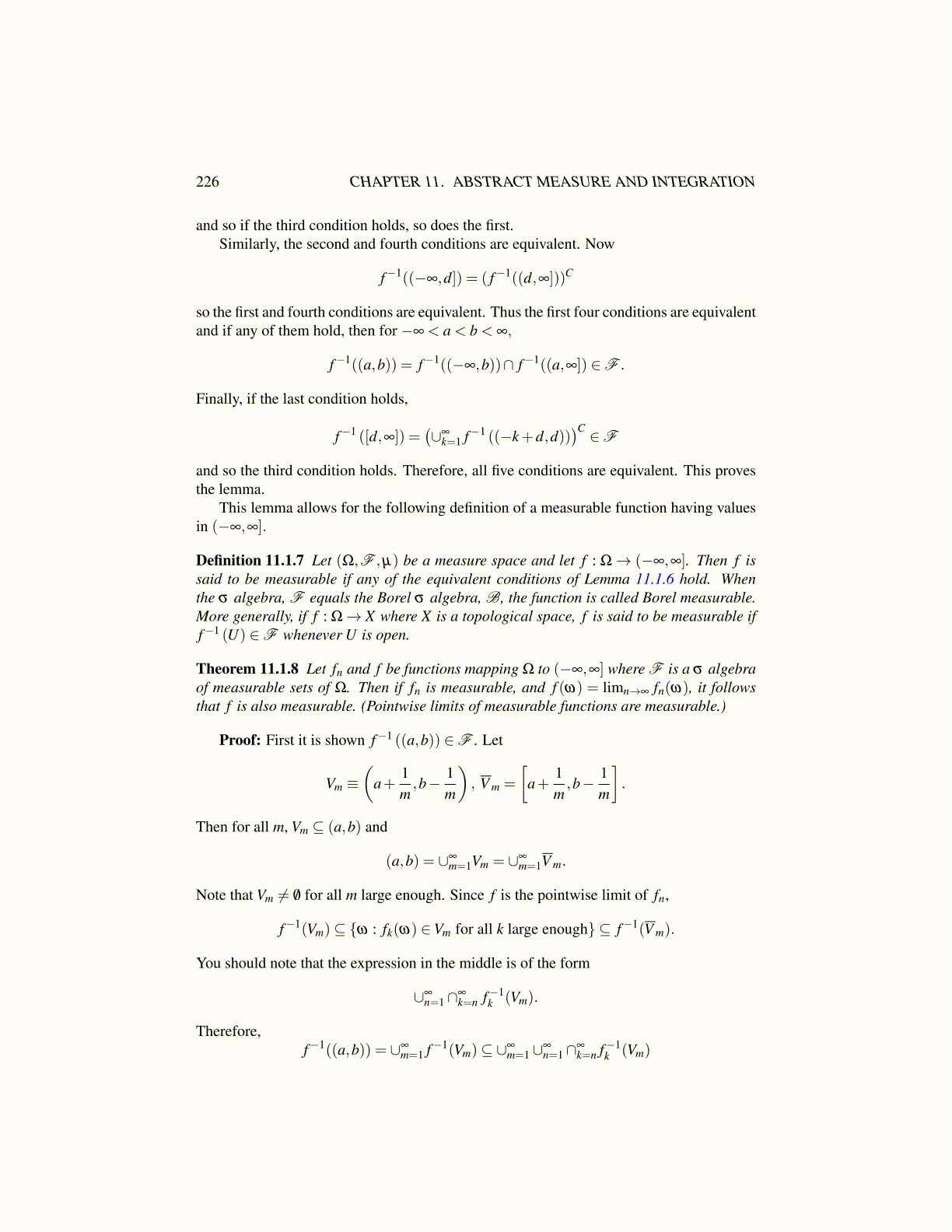
226 CHAPTER 11. ABSTRACT MEASURE AND INTEGRATION
and so if the third condition holds, so does the first.Similarly, the second and fourth conditions are equivalent. Now
f−1((−∞,d]) = ( f−1((d,∞]))C
so the first and fourth conditions are equivalent. Thus the first four conditions are equivalentand if any of them hold, then for −∞ < a < b < ∞,
f−1((a,b)) = f−1((−∞,b))∩ f−1((a,∞]) ∈F .
Finally, if the last condition holds,
f−1 ([d,∞]) =(∪∞
k=1 f−1 ((−k+d,d)))C ∈F
and so the third condition holds. Therefore, all five conditions are equivalent. This provesthe lemma.
This lemma allows for the following definition of a measurable function having valuesin (−∞,∞].
Definition 11.1.7 Let (Ω,F ,µ) be a measure space and let f : Ω→ (−∞,∞]. Then f issaid to be measurable if any of the equivalent conditions of Lemma 11.1.6 hold. Whenthe σ algebra, F equals the Borel σ algebra, B, the function is called Borel measurable.More generally, if f : Ω→ X where X is a topological space, f is said to be measurable iff−1 (U) ∈F whenever U is open.
Theorem 11.1.8 Let fn and f be functions mapping Ω to (−∞,∞] where F is a σ algebraof measurable sets of Ω. Then if fn is measurable, and f (ω) = limn→∞ fn(ω), it followsthat f is also measurable. (Pointwise limits of measurable functions are measurable.)
Proof: First it is shown f−1 ((a,b)) ∈F . Let
Vm ≡(
a+1m,b− 1
m
), V m =
[a+
1m,b− 1
m
].
Then for all m, Vm ⊆ (a,b) and
(a,b) = ∪∞m=1Vm = ∪∞
m=1V m.
Note that Vm ̸= /0 for all m large enough. Since f is the pointwise limit of fn,
f−1(Vm)⊆ {ω : fk(ω) ∈Vm for all k large enough} ⊆ f−1(V m).
You should note that the expression in the middle is of the form
∪∞n=1∩∞
k=n f−1k (Vm).
Therefore,f−1((a,b)) = ∪∞
m=1 f−1(Vm)⊆ ∪∞m=1∪∞
n=1∩∞k=n f−1
k (Vm)